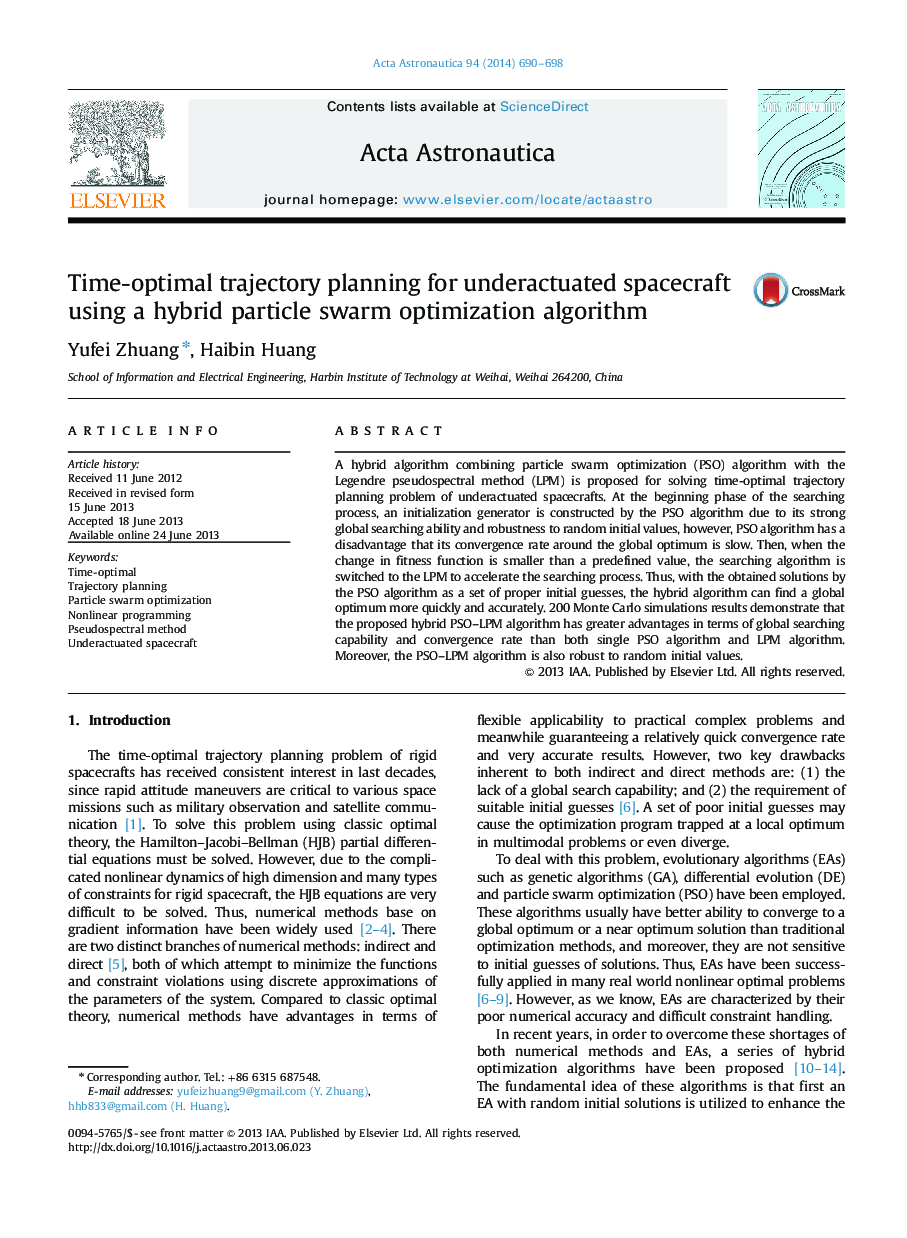| کد مقاله | کد نشریه | سال انتشار | مقاله انگلیسی | نسخه تمام متن |
|---|---|---|---|---|
| 1714778 | 1013340 | 2014 | 9 صفحه PDF | دانلود رایگان |
• We solve the time-optimal trajectory planning problem of underactuated spacecrafts with a hybrid PSO–LMP algorithm.
• The algorithm can greatly improved the probability of finding the global optimum.
• The algorithm is quite robust to random initial guesses.
• The algorithm is superior to single PSO algorithm in convergence rate and precision.
• The computational efficiency of the algorithm can be dramatically increased by flatness property.
A hybrid algorithm combining particle swarm optimization (PSO) algorithm with the Legendre pseudospectral method (LPM) is proposed for solving time-optimal trajectory planning problem of underactuated spacecrafts. At the beginning phase of the searching process, an initialization generator is constructed by the PSO algorithm due to its strong global searching ability and robustness to random initial values, however, PSO algorithm has a disadvantage that its convergence rate around the global optimum is slow. Then, when the change in fitness function is smaller than a predefined value, the searching algorithm is switched to the LPM to accelerate the searching process. Thus, with the obtained solutions by the PSO algorithm as a set of proper initial guesses, the hybrid algorithm can find a global optimum more quickly and accurately. 200 Monte Carlo simulations results demonstrate that the proposed hybrid PSO–LPM algorithm has greater advantages in terms of global searching capability and convergence rate than both single PSO algorithm and LPM algorithm. Moreover, the PSO–LPM algorithm is also robust to random initial values.
Journal: Acta Astronautica - Volume 94, Issue 2, February 2014, Pages 690–698
